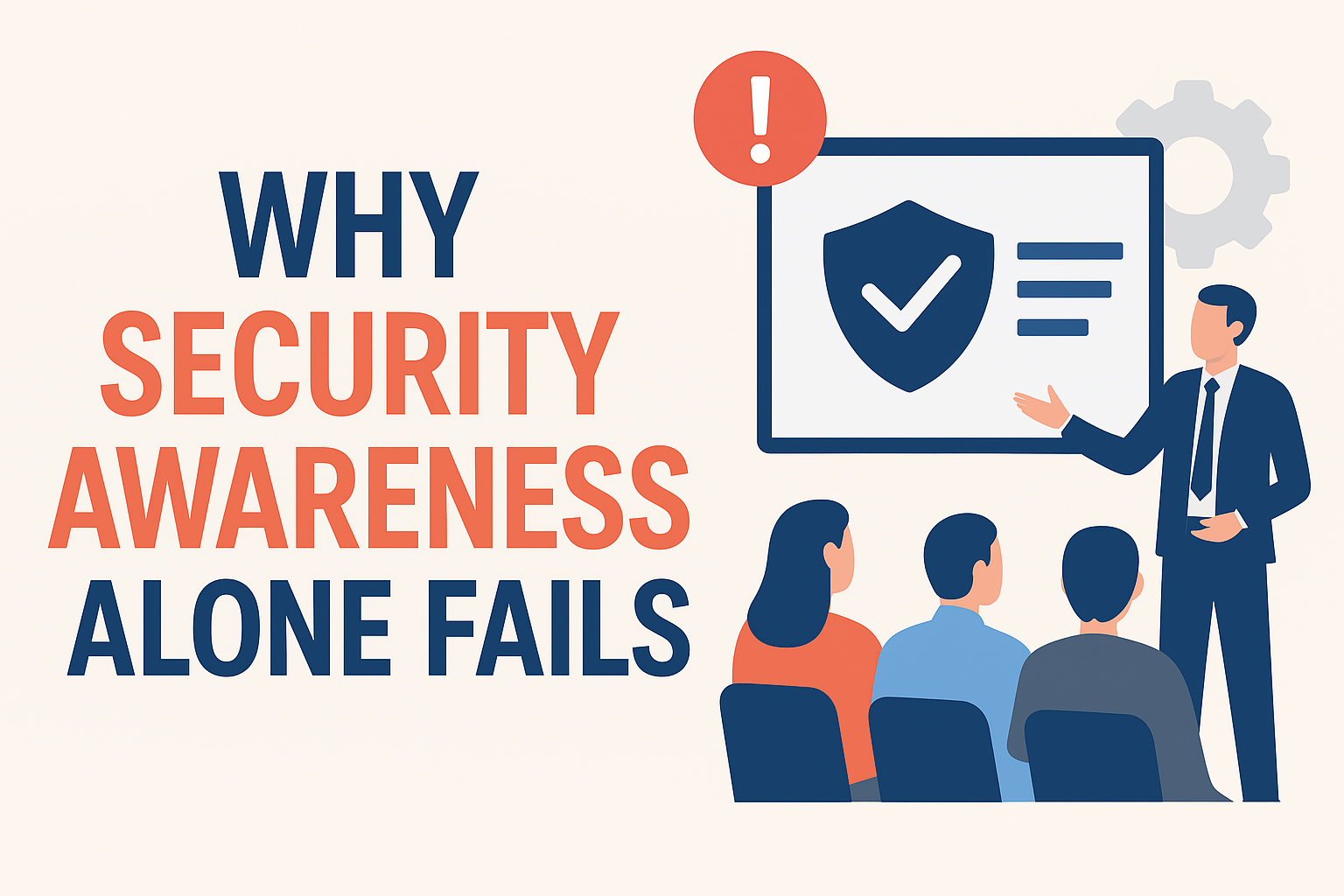
Why Security Awareness Alone Fails
In many organizations, "security awareness training" has become the go-to solution for reducing human risk. Posters, phishing simulations, and annual e-learning modules often dominate the agenda. While these efforts have value, they fall short when treated as a standalone fix.
The Limits of Awareness
Security awareness is about knowledge. It helps people recognize threats such as phishing emails, social engineering tactics, or unsafe browsing practices. But knowledge alone does not guarantee behavior change. A staff member may know the risks of reusing passwords but still reuse them because it’s convenient.
Why Behavior Change Matters
Cybersecurity is ultimately about behavior. What employees do — not just what they know — determines whether controls are effective. Without reinforcement, coaching, and accountability, knowledge fades and risky habits creep back in. This is why awareness-only programs often deliver minimal long-term impact.
Building a Stronger Model
- Pair awareness with culture: Employees should feel empowered and responsible, not just lectured.
- Reinforce with controls: Combine training with password managers, multi-factor authentication, and endpoint protections.
- Provide leadership support: When leaders model secure behavior, employees are more likely to follow.
- Measure behavior, not attendance: Metrics should track phishing click rates, reporting frequency, and policy compliance — not just training completions.
Conclusion
Awareness is a starting point, not the finish line. Real security comes when awareness is embedded into culture, supported by leadership, and backed by effective controls. Organizations that stop at awareness risk creating a false sense of security.
Security is not about what people know. It’s about what people do.